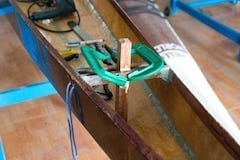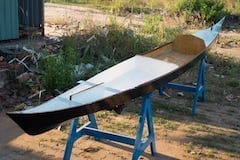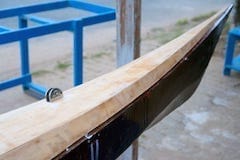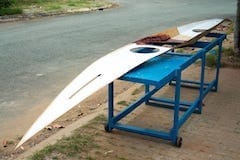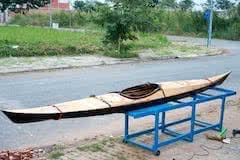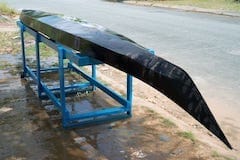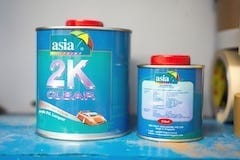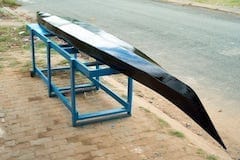 ack to the normal, procedural routines of: work, paddle, eat, sleep… then repeat those steps… the loop will be going on like that for a while. I’m gonna have some miscellaneous updates for my Hello World – 3, but for now, just more ‘harness’ physical exercising to regain and improve my endurance after a long Tết (new year) holiday. It’s so good to return from mountains to waters, as my lovely kayak is awaiting for more mileage to pass under her keel in the upcoming time.
ack to the normal, procedural routines of: work, paddle, eat, sleep… then repeat those steps… the loop will be going on like that for a while. I’m gonna have some miscellaneous updates for my Hello World – 3, but for now, just more ‘harness’ physical exercising to regain and improve my endurance after a long Tết (new year) holiday. It’s so good to return from mountains to waters, as my lovely kayak is awaiting for more mileage to pass under her keel in the upcoming time.
This season of the year, there’s plenty of wind around, especially around Bình Khánh ferry area, a crossroad that has lots of turbulence. Sometimes it creates enough waves to feel like a surf, riding a long series of running waves is a very interesting experiences, and HW – 3 surfs really well, though it’s a bit harder to control compared to the shorter 14′ HW – 2. When I saw sailors on those big freighters who were all shooting videos of the kayak, I know that SHE IS beautiful and attractive! 😀
Since I haven’t equipped HW – 3 with a spray skirt and an electric water pump (that would be in the next months), I simply carry a small plastic bucket to drain the water out when it rains, it’s starting the rainy season. Continue more and more paddling with HW – 3, to get to really know her, to understand precisely how she would behave in various different conditions: sunny, rainy, windy, wavy, strong current… There’s a long way of practicing since I’m feeling I’m not ready still for longer voyages.

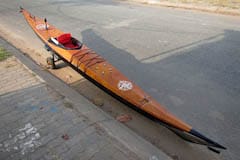
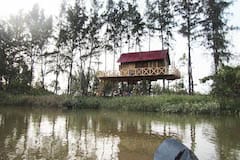
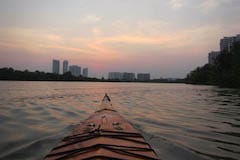
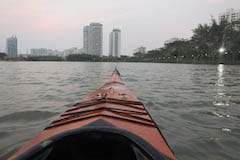
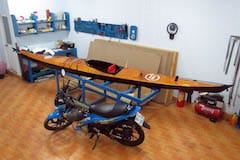
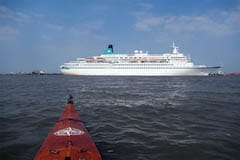
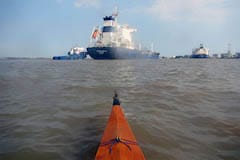
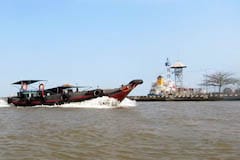
 ast batch of updates for my kayak before Tết (Lunar new year), a detachable and retractable light (and camera) pole. At a bicycle accessories shop, I found a small signal light which uses solar cell (about 3 square inches in area). Testing the LED torch showed that after being fully charged, it could continuously blink for two nights, more than enough to be used for the boat. It has 4 blinking modes, which could be changed by a switch located behind.
ast batch of updates for my kayak before Tết (Lunar new year), a detachable and retractable light (and camera) pole. At a bicycle accessories shop, I found a small signal light which uses solar cell (about 3 square inches in area). Testing the LED torch showed that after being fully charged, it could continuously blink for two nights, more than enough to be used for the boat. It has 4 blinking modes, which could be changed by a switch located behind.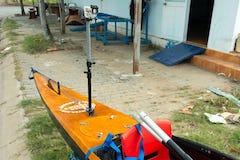
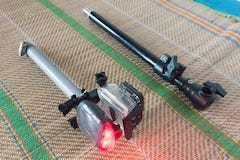
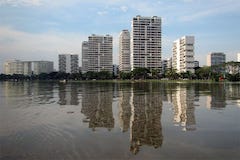
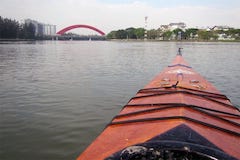
 ade some more miscellaneous improves to my HW – 3 kayak… First is filling the two boat’s ends with Polyurethane foam. For an example of how PU foam works, see
ade some more miscellaneous improves to my HW – 3 kayak… First is filling the two boat’s ends with Polyurethane foam. For an example of how PU foam works, see 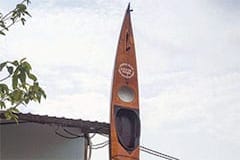
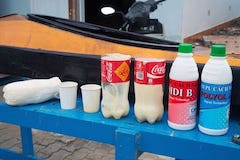
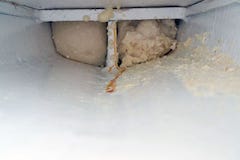
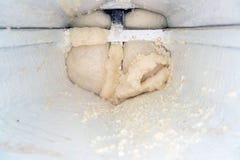
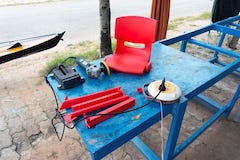
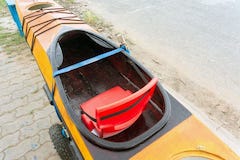
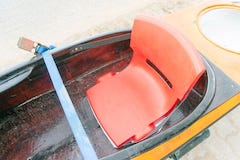
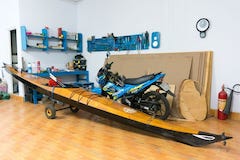
 aving made some more thorough testing, I’m now feeling very pleased with the new boat and its build quality. After several 20 ~ 25 km paddling trips, I think I can average out at 7 kmph for extended time (5, 6 hours) and probably longer with more endurance exercising. That’s still not up to my expectation yet, but about speed, on the internet, you can hardly find trustable reporting on kayak and its paddler’s abilities, some boating information is purely… bloating!
aving made some more thorough testing, I’m now feeling very pleased with the new boat and its build quality. After several 20 ~ 25 km paddling trips, I think I can average out at 7 kmph for extended time (5, 6 hours) and probably longer with more endurance exercising. That’s still not up to my expectation yet, but about speed, on the internet, you can hardly find trustable reporting on kayak and its paddler’s abilities, some boating information is purely… bloating!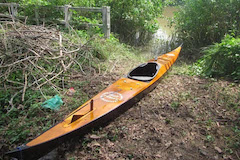
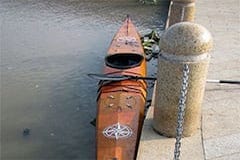
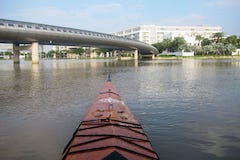

 roudly present the new – kid – on – the – block, the flagship to join my armada 😬! The first image below: the boat and her quite – satisfied builder / owner! 😀 Today is launch day (the French phase
roudly present the new – kid – on – the – block, the flagship to join my armada 😬! The first image below: the boat and her quite – satisfied builder / owner! 😀 Today is launch day (the French phase 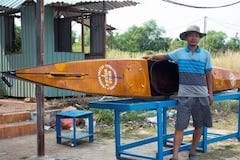
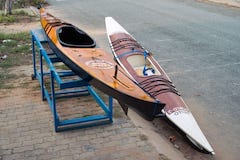
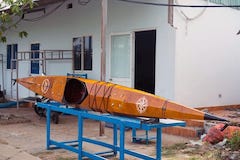
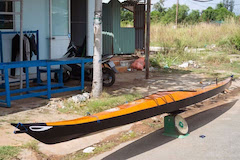
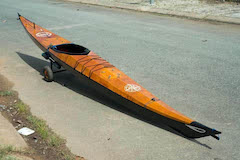
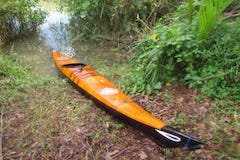
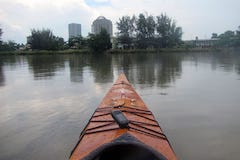
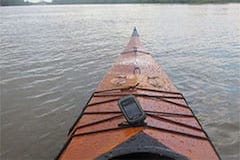
 hen all the vinyl decals are in place, I started varnishing the deck. A note about vinyl stickers, which I can have them cut at a local shop for a cheap price. The last time, I designed all with Photoshop, then export to EPS format. Unfortunately, Corel Draw does not understand that EPS very well. Corel is usually the software used to operate the vinyl cutter machine: the vector editing program just “print” the designs to the vinyl cutter, which handles all “drawing” (cutting).
hen all the vinyl decals are in place, I started varnishing the deck. A note about vinyl stickers, which I can have them cut at a local shop for a cheap price. The last time, I designed all with Photoshop, then export to EPS format. Unfortunately, Corel Draw does not understand that EPS very well. Corel is usually the software used to operate the vinyl cutter machine: the vector editing program just “print” the designs to the vinyl cutter, which handles all “drawing” (cutting).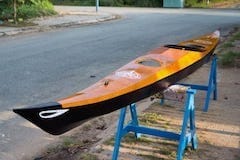
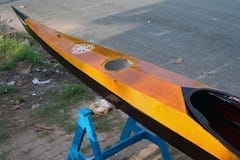
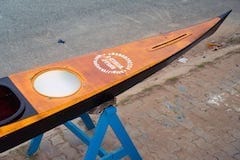
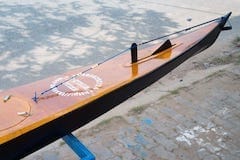
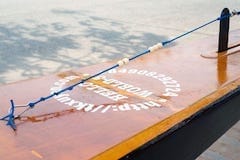
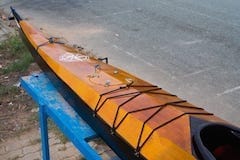
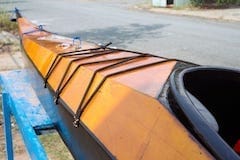
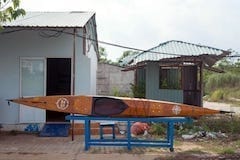
 oday, I sanded the hull slightly, to partly remove the previous unsuccessful varnishing. Then I painted the contour line where the deck and hull meet before proceed on re – varnishing the bottom again. Images below: using duct tape to mask the line, the result is quite eye – pleasing, the line helps better hiding the imperfect deck & hull joining, it create an “optical illusion” that the joining is smooth. Next is to varnish the whole boat external sides, hull and deck.
oday, I sanded the hull slightly, to partly remove the previous unsuccessful varnishing. Then I painted the contour line where the deck and hull meet before proceed on re – varnishing the bottom again. Images below: using duct tape to mask the line, the result is quite eye – pleasing, the line helps better hiding the imperfect deck & hull joining, it create an “optical illusion” that the joining is smooth. Next is to varnish the whole boat external sides, hull and deck.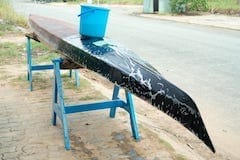
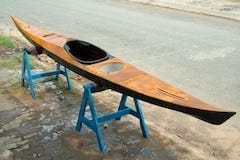
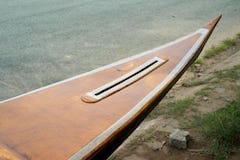
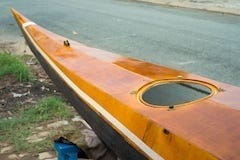
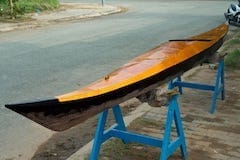
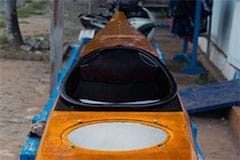
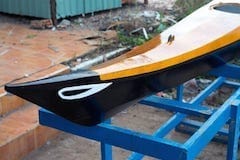
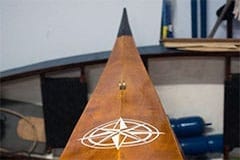
 anding, sanding and sanding… lots of sanding required to finish working on the deck, the cockpit, the hatches and other parts. Also, the bottom paint is not up to the quality: the puce color is too dark, and the gloss is not good enough (the 2K paint I use dries out too fast, many of the times, the roller becomes very sticky and hence doesn’t make a smooth surface). Thus I would need also to sand the bottom down again and apply another layer of clear top coat.
anding, sanding and sanding… lots of sanding required to finish working on the deck, the cockpit, the hatches and other parts. Also, the bottom paint is not up to the quality: the puce color is too dark, and the gloss is not good enough (the 2K paint I use dries out too fast, many of the times, the roller becomes very sticky and hence doesn’t make a smooth surface). Thus I would need also to sand the bottom down again and apply another layer of clear top coat.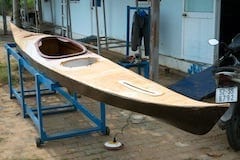
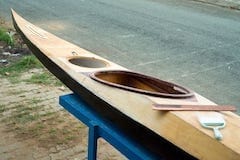
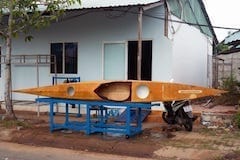
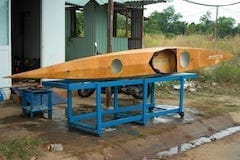
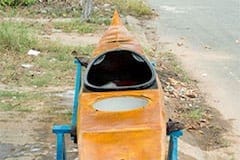
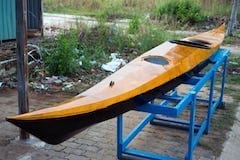
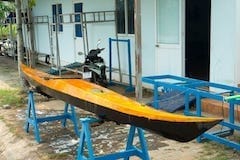
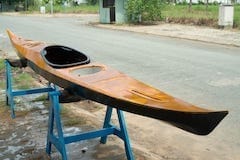
 oining the hull and deck, now comes the time the boat “transforms” into its final shape! 😀 I used lots of fastening lines to press fitting the two halves, after sticking some putty along the inwales. The B5 epoxy mentioned earlier is very slow in curing, so I had plenty of time to work on the joining. The bow fits perfectly, I could just use some duct tapes to hold the deck down. Toward the stern is not as good, and I had to use the compress – air gun to help nailing together the two parts.
oining the hull and deck, now comes the time the boat “transforms” into its final shape! 😀 I used lots of fastening lines to press fitting the two halves, after sticking some putty along the inwales. The B5 epoxy mentioned earlier is very slow in curing, so I had plenty of time to work on the joining. The bow fits perfectly, I could just use some duct tapes to hold the deck down. Toward the stern is not as good, and I had to use the compress – air gun to help nailing together the two parts.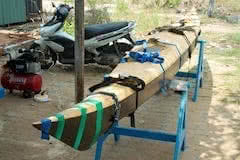
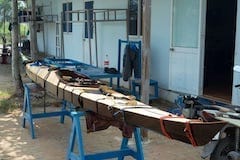
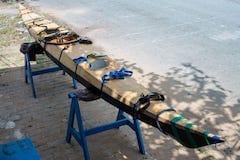
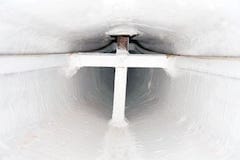
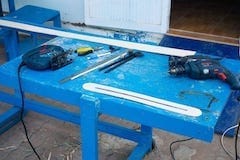
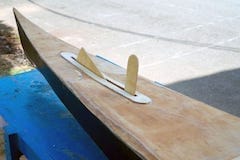
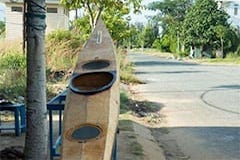
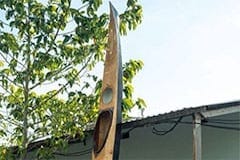
 inishing works on the mast base. Although sail is something not included in this “version” (intended to be installed sometime next year), the mast base need to be ready for now, before the deck and hull are joined together, or else it would be very difficult to work on later. It takes me lots of time shopping around to find the appropriate hardwares to be used as the mast base, and I found some good ones, all made of stainless steel (shown in the 3rd image below).
inishing works on the mast base. Although sail is something not included in this “version” (intended to be installed sometime next year), the mast base need to be ready for now, before the deck and hull are joined together, or else it would be very difficult to work on later. It takes me lots of time shopping around to find the appropriate hardwares to be used as the mast base, and I found some good ones, all made of stainless steel (shown in the 3rd image below).